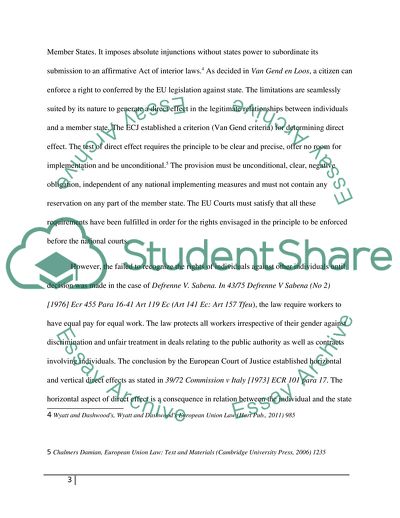Cite this document
(Concept of Direct Effects Coursework Example | Topics and Well Written Essays - 2000 words, n.d.)
Concept of Direct Effects Coursework Example | Topics and Well Written Essays - 2000 words. https://studentshare.org/law/1850837-with-reference-to-the-case-law-on-direct-effect-critically-discuss-the-extent-to-which-this-concept-direct-effect-is-an-effective-means-of-protecting-an-individuals-european-union-law-rights
Concept of Direct Effects Coursework Example | Topics and Well Written Essays - 2000 words. https://studentshare.org/law/1850837-with-reference-to-the-case-law-on-direct-effect-critically-discuss-the-extent-to-which-this-concept-direct-effect-is-an-effective-means-of-protecting-an-individuals-european-union-law-rights
(Concept of Direct Effects Coursework Example | Topics and Well Written Essays - 2000 Words)
Concept of Direct Effects Coursework Example | Topics and Well Written Essays - 2000 Words. https://studentshare.org/law/1850837-with-reference-to-the-case-law-on-direct-effect-critically-discuss-the-extent-to-which-this-concept-direct-effect-is-an-effective-means-of-protecting-an-individuals-european-union-law-rights.
Concept of Direct Effects Coursework Example | Topics and Well Written Essays - 2000 Words. https://studentshare.org/law/1850837-with-reference-to-the-case-law-on-direct-effect-critically-discuss-the-extent-to-which-this-concept-direct-effect-is-an-effective-means-of-protecting-an-individuals-european-union-law-rights.
“Concept of Direct Effects Coursework Example | Topics and Well Written Essays - 2000 Words”. https://studentshare.org/law/1850837-with-reference-to-the-case-law-on-direct-effect-critically-discuss-the-extent-to-which-this-concept-direct-effect-is-an-effective-means-of-protecting-an-individuals-european-union-law-rights.


